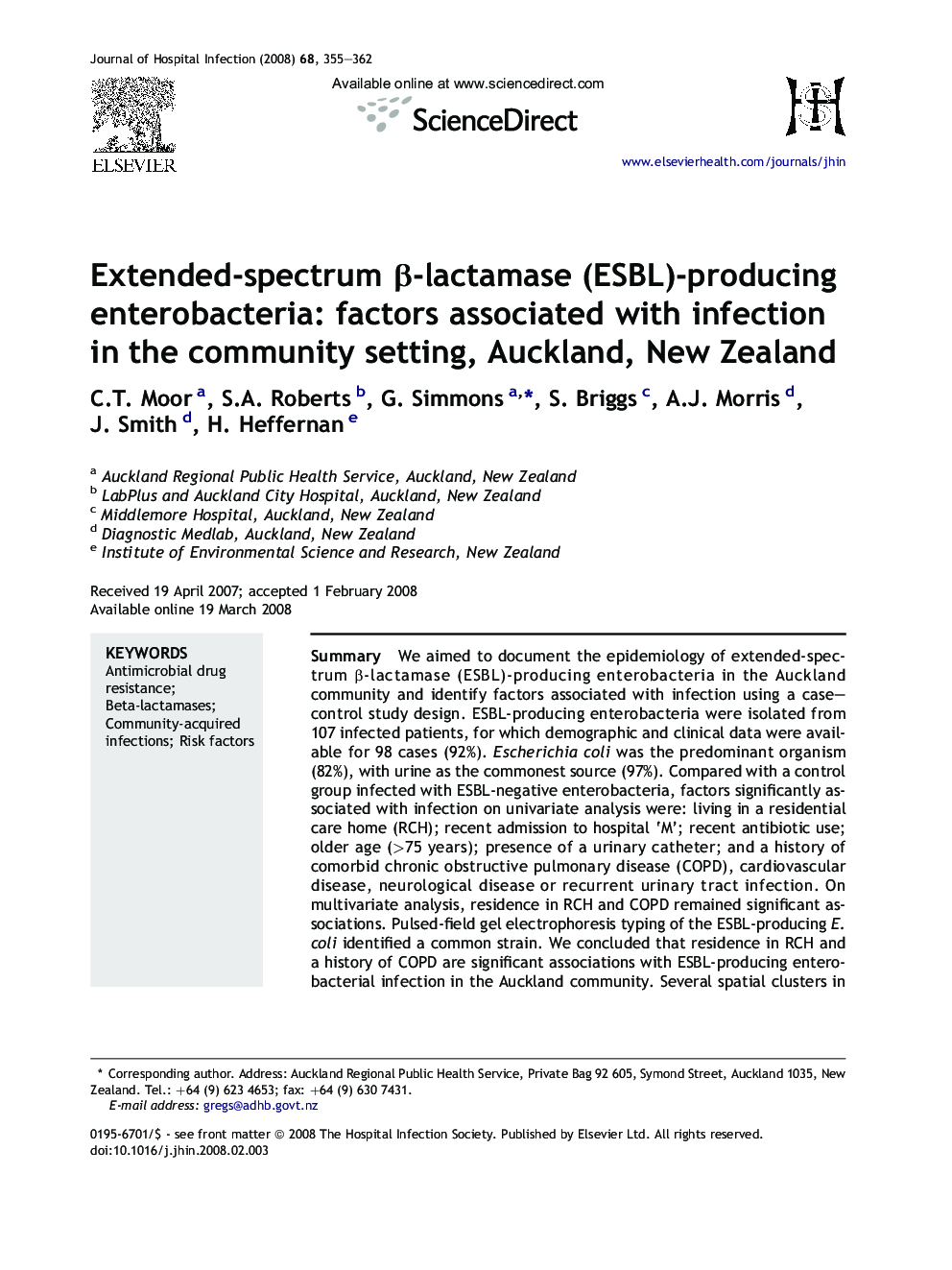| Article ID | Journal | Published Year | Pages | File Type |
|---|---|---|---|---|
| 3373290 | Journal of Hospital Infection | 2008 | 8 Pages |
SummaryWe aimed to document the epidemiology of extended-spectrum β-lactamase (ESBL)-producing enterobacteria in the Auckland community and identify factors associated with infection using a case–control study design. ESBL-producing enterobacteria were isolated from 107 infected patients, for which demographic and clinical data were available for 98 cases (92%). Escherichia coli was the predominant organism (82%), with urine as the commonest source (97%). Compared with a control group infected with ESBL-negative enterobacteria, factors significantly associated with infection on univariate analysis were: living in a residential care home (RCH); recent admission to hospital ‘M’; recent antibiotic use; older age (>75 years); presence of a urinary catheter; and a history of comorbid chronic obstructive pulmonary disease (COPD), cardiovascular disease, neurological disease or recurrent urinary tract infection. On multivariate analysis, residence in RCH and COPD remained significant associations. Pulsed-field gel electrophoresis typing of the ESBL-producing E. coli identified a common strain. We concluded that residence in RCH and a history of COPD are significant associations with ESBL-producing enterobacterial infection in the Auckland community. Several spatial clusters in RCHs and a common strain suggest point-source outbreaks. A substantial number of community cases did not live in an RCH nor had been recently hospitalised, suggesting the independent generation of ESBL-producing enterobacteria in the broader community.
